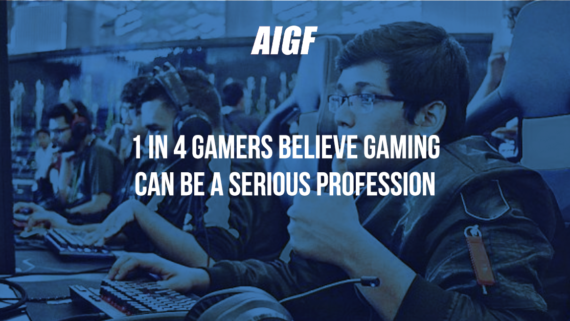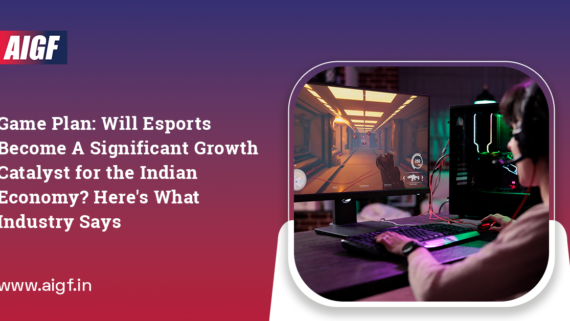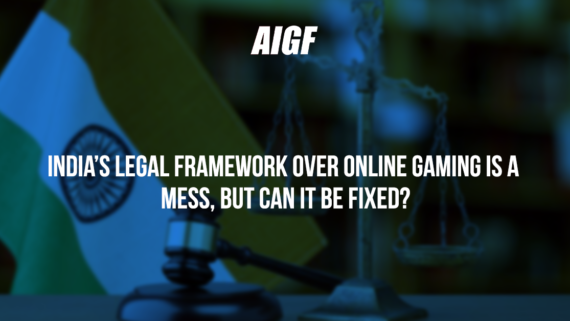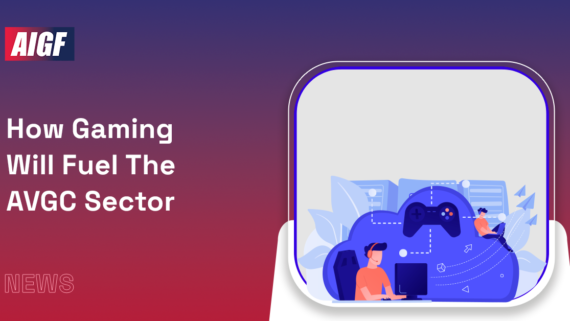Effective regulation of eSports can legitimise the sport, build revenues, increase employment and create a transparent model for governing eSports in India.
Laying the perfect pitch: There is a need to recognise & regulate eSports in India
For those unaware, eSports is competitive online gaming in electronic sports. Similar to Indian Premier League for cricket, the English Premier League for football, or the Pro Kabaddi League for KabadDi, eSports comprises a range of sports played online, including in a league format. eSports also incorporates different ‘types’ of games. Players can fight it out with each other in strategy games such as League of Legends, DOTA, Starcraft, Smite, etc or in sports like football, cricket, basketball, and more. Nonetheless, there are basic differences between eSports & physical contact sports. The fundamental difference is the absence of physical contact. As opposed to regular sports, the contest occurs in the virtual world, commanded by the players via a console.
Even though the market is currently in a nascent stage in India, there is a palpable buzz around eSports in the country, particularly with the latest deal between Airtel & Nodwin Gaming. For the uninitiated, the global eSports industry is estimated to be worth a massive $1.1 billion and has grown 16% since 2019. By 2020 end, statistic & data service provider Statista foretells that the eSports revenue will reach $2.4 billion. As of today, India ranks second to China in the list of countries with the maximum smartphone users, amounting to around 350 million users with a 25.3% smartphone penetration rate. For India, this indicates a substantial share of the global eSports market loaded with untapped potential.
Presently, there are more than 2 million fans & 2 million occasional eSports viewers and the nation is rapidly developing into one of the top destinations for organizing eSports leagues like the Indian gaming league, ESL gaming. In the latest edition of Asia Games 2018, 24-year old Tirth Mehta from Gujarat went down in history by winning India’s first-ever eSports medal, a bronze for a card-based video game tournament called Hearthstone.
To keep these positive trends going, government regulation in the field of eSports has become necessary. Government regulation will not only provide legitimacy to eSports but will also help address the problems in the eSports business today which include match-fixing, fraud & doping issues.
The eSports Integrity Coalition (ESIC) was founded in 2015 to help address the many integrity problems that the sector is facing, particularly related to match-fixing & fraud. The ESIC has already created various pieces of regulatory literature, including a code of conduct & an anti-doping code. If the government of India adopts the ESIC codes as part of regulating the eSports industry, it would suggest that the government wants to promote eSports among the youth in this nation & it would help boost confidence of investors to invest in an eSports ecosystem in India.
As of now, the Ministry of Youth Affairs & Sports (MYAS) and the Indian Olympic Association (IOA) confer recognition on any sport and its federation(s). Once recognised, any sporting association can send its teams to represent India in global competitions like the Olympics or World Cups.
MYAS & IOA may presently check out foreign models to discern the nature of regulation. For example, in the South Korean model, the government, while recognising eSports, outsources the regulatory mechanism to Korea E-Sports Association (KeSPA), which was founded in the year 2000. KeSPA is a member of the Korea Olympic Committee & the International ESports Federation. KeSPA controls the broadcasting framework related to eSports, hence promoting the sport & creating a fan base. KeSPA also sets up different leagues, tournaments, regulates the choice of professionals to represent South Korea in global contests. KeSPA has its own rules & regulations that all players have to follow. KeSPA plays a part in regulating contracts & professional players earn between $40,000 and $105,000, with the top players earning up to $3 Million per year. KeSPA also takes full ownership of matters on gaming revenues from broadcasting rights (including redistribution of revenues with the Korean eSports framework), planning tournaments, player contracts & codes of conduct and has built an active ecosystem of fans, players & sponsors in the eSports sector.
India can take inspiration from South Korea & embrace a similar model. A representative eSports federation like the All India Gaming Federation (AIGF) for instance, which is a not for profit organisation & the apex body that focuses on policy advocacy, research & creates a forum for discussion between different stakeholders in the gaming industry, could ideate a regulatory model in combination with the government agencies. AIGF, for instance, could use its industry experience in (a) managing sponsorships for eSports gaming in India, (b) determining broadcasting frameworks, (c) conducting leagues, tournaments in India, (d) engaging with various publishers (creators of eSports games); and (e) setting the rules for playing eSports on a competitive basis & the overall promotion of eSports in India. India has witnessed the success of a self-regulatory framework in broadcasting & advertising and the same success could be replicated in the eSports sector, where the MYAS & IOA could rely on AIGF’s expertise & learnings in the eSports business and can delegate authority to AIGF to regulate eSports in India. Effective regulation of eSports can legitimise the sport, build revenues, boost employment and create a transparent model for governing eSports in India.











Comments
No comment yet.